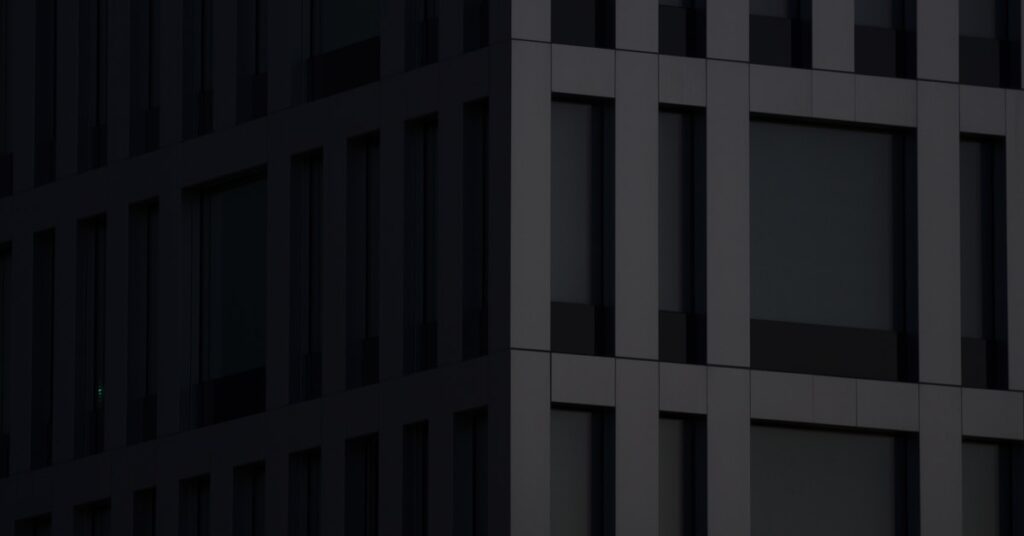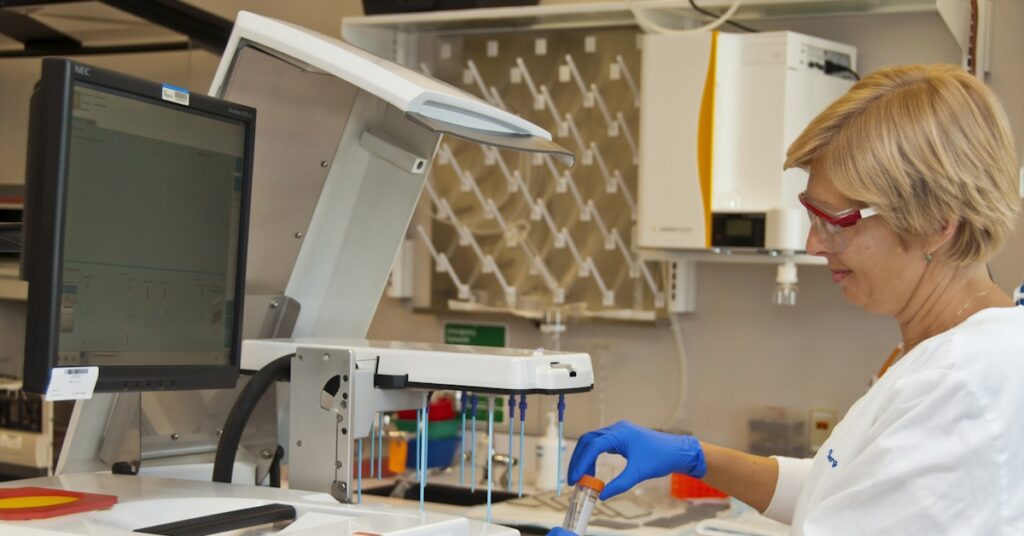Are 2D designs holding you back?
Outdated tools make real-time collaboration a nightmare. Endless revisions and miscommunication slow down your entire development pipeline, frustrating your team.
It’s frustrating when you can’t get everyone on the same page. This leads to costly errors and missed project deadlines.
In fact, a recent report found that 73% of companies report inefficiencies in design collaboration. This shows how 2D limitations directly impact your team’s productivity.
But what if you could visualize projects in immersive 3D? This would allow your entire team to interact and collaborate in real-time.
To achieve a truly streamlined workflow, addressing data integration challenges is often just as critical.
In this article, I’ll guide you through my top picks. I’ll break down the best ar visualization software to help you make the right choice.
You’ll discover tools that streamline your workflow. They’ll help you create stunning presentations that get stakeholder buy-in much faster.
Let’s get started.
Quick Summary:
| # | Software | Rating | Best For |
|---|---|---|---|
| 1 | Unity → | Teams of any size | |
| 2 | PTC → | Enterprise-scale businesses | |
| 3 | Vection Technologies → | Technical evaluators & managers | |
| 4 | Scope AR → | Enterprise industrial teams | |
| 5 | Zakeke → | Product managers |
1. Unity

Struggling with outdated AR visualization tools?
Unity offers end-to-end tools to transform your 3D data into immersive AR experiences. This means you can overcome limitations of insufficient cross-platform support.
Your team can move beyond basic visualization and create engaging apps for any device, anywhere. You’ll discover tools built for your specific needs.
This is your path to seamless integration.
Unity allows you to bring your vision to life, leveraging tools used by professionals to create hit apps across various devices and platforms. This helps you overcome the pain point of incompatible software and limited interoperability.
You can transform CAD and 3D data into immersive apps, streamlining your design and prototyping cycles. Plus, you get enterprise support, expert assistance, and scalable creation tools that fit teams of any size, removing fears of hidden scalability issues. Additionally, comprehensive resources like a knowledge base and step-by-step help ensure your team finishes projects faster, boosting overall productivity and success.
While we’re discussing enterprise solutions, my guide on patient engagement software provides insights into seamless EHR integration and compliance.
Showcase products in immersive AR.
Key features:
- Multi-platform creation: Develop and run AR applications across 20+ end-user platforms, ensuring broad accessibility and reach for your visualizations.
- 3D data transformation: Convert complex CAD and 3D data into immersive AR apps, allowing for detailed product showcasing and stakeholder engagement.
- Scalable enterprise support: Access expert support and tools designed to manage complex real-time 3D projects for teams of any size, ensuring smooth workflows.
Learn more about Unity features, pricing, & alternatives →
Verdict: Unity is an excellent choice for technical evaluators and product managers seeking the best AR visualization software. Its comprehensive tools for transforming 3D data into immersive apps, coupled with extensive platform support and enterprise-level scalability, directly address the need for robust, integrated solutions that enhance collaboration and impress stakeholders.
2. PTC

Struggling with outdated AR tools and integration headaches?
PTC offers a comprehensive, scalable enterprise AR platform with solutions like Vuforia Studio and Expert Capture. This means you can create immersive AR experiences.
This platform helps you overcome challenges with real-time collaboration and cross-platform workflows, ensuring your teams stay connected and productive.
Let’s dive deeper into their solutions.
PTC’s Vuforia suite tackles key business needs, from addressing skills gaps to streamlining manufacturing. This allows you to improve worker safety, proficiency, and agility by leveraging existing 3D and IoT data.
For developers, Vuforia Engine provides advanced computer vision and cross-platform reach, making it easy to create robust AR applications. Additionally, Vuforia Chalk connects experts with technicians, enabling remote assistance and problem-solving through AR annotations. The result is faster prototyping and enhanced collaboration.
You can also use no-code and low-code solutions, which gives you fast time to market and customization options.
If you’re also exploring how technology interprets visual data, my article on image recognition software might be insightful for your projects.
Key features:
- Comprehensive AR platform: Vuforia provides a scalable suite of tools to address various enterprise needs, from training to sales and quality inspection.
- Content creation and expert knowledge transfer: Solutions like Vuforia Studio and Expert Capture allow you to easily transform 3D and IoT data into AR experiences and capture expert knowledge.
- Remote assistance and cross-platform reach: Vuforia Chalk enables real-time remote collaboration, while Vuforia Engine offers advanced computer vision and supports mobile devices and eyewear.
Learn more about PTC features, pricing, & alternatives →
Verdict: PTC’s Vuforia platform stands out as a top contender for best AR visualization software, particularly for its comprehensive suite of tools like Studio, Expert Capture, and Chalk. This integrated approach helps technical evaluators streamline collaboration, improve training, and leverage existing data, as evidenced by PTC being named the #1 vendor in Quadrant’s 2024 Enterprise Augmented Reality Assessment.
3. Vection Technologies

Struggling with outdated AR tools and clunky collaboration?
Vection Technologies offers Artificial Intelligence software and immersive experiences designed to enhance your business efficiency and streamline workflows. This means you can overcome the limitations of current tools, which often lack real-time features.
Your team can achieve faster time to market and effective training through their innovative solutions. This directly addresses the pain point of prolonged onboarding and slow prototyping cycles.
Here’s how Vection Technologies steps in.
They provide solutions specifically built to improve remote sales and boost conversion rates. This means your sales team can leverage augmented shopping experiences to impress stakeholders and close deals more effectively.
Additionally, Vection Technologies supports XR customizations and white labels, ensuring their solutions fit your specific industry needs. This helps avoid the fear of choosing solutions with hidden scalability limitations or poor support for your unique use cases. You can also benefit from their 3D modeling and rendering services, ensuring high-quality visualizations. Their focus on immersive experiences streamlines collaboration across your teams.
The result is enhanced cross-team collaboration and impressive product showcases.
If you’re looking to personalize onboarding and retain users, my guide on best digital adoption platform covers essential strategies.
Key features:
- AI and spatial computing: Leverages Artificial Intelligence software and immersive experiences to enhance business efficiency, workflow, collaboration, training, and sales.
- Business efficiency improvements: Supports faster time to market, effective training, improved remote sales, and augmented shopping experiences, aiming to increase conversion rates.
- Custom XR solutions: Offers XR customizations and white labels, along with 3D modeling and rendering services, ensuring tailor-made immersive experiences for various business needs.
Learn more about Vection Technologies features, pricing, & alternatives →
Verdict: Vection Technologies, with its focus on AI and spatial computing, provides a robust solution for technical evaluators and product managers. Its capabilities in enhancing collaboration, improving sales, and offering customized XR experiences make it a strong contender for the best AR visualization software, helping you achieve faster prototyping and impress stakeholders.
4. Scope AR

Struggling with outdated AR visualization tools and collaboration roadblocks?
Scope AR’s WorkLink platform offers an all-in-one solution designed to accelerate productivity and make mastery accessible to anyone at enterprise scale. This means you can create, view, collaborate, manage, and integrate AR content seamlessly.
Imagine streamlining your assembly processes with AR work instructions that cut installation time by 25% and boost accuracy. Your team can achieve a 99% reduction in pre-work preparation.
Here’s how you can achieve enhanced productivity.
Scope AR lets you import any CAD file for web-based, no-code content creation, building expertise directly into your workflows. You can then access and interact with 3D content on any device, exactly when you need it.
The platform supports real-time collaborative interactions with 3D content, enabling your team to work together efficiently. You can also measure and analyze productivity impacts with hard data insights built-in. Additionally, Scope AR provides robust integration capabilities with PLM, MES, and custom systems, ensuring secure deployment whether on-premises or in the cloud with SOC 2, HIPAA, and NIST compliance.
This comprehensive approach helps streamline operations across various industries, from aerospace and defense to general industrial manufacturing, empowering your workforce with critical knowledge.
You’re getting accelerated productivity and significant savings.
Key features:
- No-code content creation: Easily design and publish interactive AR experiences from existing CAD files using a web browser, simplifying complex content generation.
- Real-time collaboration: Interact with 3D content in real time across multiple devices, fostering seamless teamwork and accelerated problem-solving for your projects.
- Enterprise-grade security & integration: Benefit from SOC 2, HIPAA, and NIST compliance, with options for cloud or on-premises deployment and integration with existing PLM/MES systems.
Learn more about Scope AR features, pricing, & alternatives →
Verdict: Scope AR’s WorkLink platform dramatically improves efficiency, as evidenced by case studies showing 95% reduced time interpreting work instructions and $2.4M saved in training travel. Its powerful features for creation, collaboration, and secure integration make it a top contender for the best AR visualization software.
5. Zakeke

Struggling with static product presentation and outdated tools?
Zakeke offers a robust 3D DAM & AR Viewer, letting you create, manage, and showcase 3D assets with integrated AR visualization. This means you can finally ditch those flat images.
Imagine enhancing product presentation with hyper-realistic 3D models and giving your buyers ultimate confidence; this removes the struggle of comparing complex technical specs.
This is how you streamline collaboration.
Zakeke transforms your e-commerce with real-time customization, 3D, AR, and virtual try-ons. It allows you to showcase unlimited product variants digitally, minimizing inventory constraints and endless photoshoots.
You can also offer AI-powered, hyper-realistic, app-free virtual try-ons, blending them with live customization for a truly fresh experience. This means faster prototyping cycles and enhanced cross-team collaboration. Additionally, Zakeke integrates effortlessly with major platforms like Shopify, WooCommerce, and Salesforce, ensuring a seamless fit into your existing development pipelines and supporting cross-platform workflows without hidden scalability limitations.
The result? Immersive product experiences without costly custom development.
Before diving deeper, if you’re also exploring ways to improve administrative efficiency in other sectors, my guide on church management software might be useful.
Key features:
- 3D DAM & AR Viewer: Create, manage, and showcase your 3D models with integrated AR visualization capabilities, providing immersive product experiences for your customers.
- Virtual Try-On: Offer AI-powered, hyper-realistic, and app-free virtual try-ons that boost sales and reduce returns by letting customers visualize products on themselves.
- Seamless Integrations: Connect Zakeke effortlessly with major e-commerce platforms like Shopify, WooCommerce, and Salesforce, ensuring smooth workflows and data synchronization.
Learn more about Zakeke features, pricing, & alternatives →
Verdict: Zakeke is a powerful solution for those seeking the best AR visualization software, enabling product managers to offer made-to-order products in 3D and AR, eliminating excess samples, and ensuring you produce only what clients design, resulting in 100% sell-out, as seen with Design Italian Shoes.
6. SynergyXR

Struggling with outdated AR visualization tools?
SynergyXR offers a platform where your experts can build, manage, and scale immersive learning experiences. This means you gain significant efficiencies for vital business processes.
You’ll find it’s faster and more cost-effective than ever before to deploy experiences, enabling seamless collaboration and communication across your organization.
Here’s a better way forward.
SynergyXR transforms how you train, support, and sell with extended reality. It addresses common pain points like complex technical training and the need for remote support.
The software makes complex subjects accessible, whether you’re onboarding new hires or providing technical training. This platform is designed for absolutely zero coding required.
Additionally, it supports multi-user collaboration, allowing colleagues to work together from anywhere, and provides secure cloud storage for easy content management. This enables you to transform how you showcase products and services.
Get ready to impress your stakeholders.
Before diving deeper, if you are also interested in visual project planning, you might find my analysis of landscape design software helpful.
Key features:
- No-code authoring: Empower your experts to create, manage, and scale immersive XR content without needing any coding skills.
- Multi-user collaboration: Facilitate real-time interaction and teamwork with colleagues from any location, enhancing communication and problem-solving.
- Secure cloud storage: Reliably store and organize your valuable XR assets, ensuring easy access and management across your projects.
Learn more about SynergyXR features, pricing, & alternatives →
Verdict: SynergyXR stands out as the best AR visualization software by offering a no-code platform for creating scalable XR experiences, perfect for technical training, remote support, and compelling product demonstrations. Its ease of use and multi-user capabilities help your team streamline collaboration and impress stakeholders.
7. Fologram

Struggling with outdated AR tools and clunky workflows?
Fologram offers robust mixed reality for your workshop, streamlining design and fabrication. You can easily view and make real-time changes to your Rhino models. This means you can quickly switch between different configurations in mixed reality.
Here’s how Fologram elevates your AR visualization capabilities.
Fologram solves integration hurdles by creating a live link between Rhino and your mixed reality device.
It lets you stream, locate, and interact with your 3D models simply by scanning a QR code. Additionally, parametric models can be controlled directly using sliders and buttons within mixed reality, offering precise interactive fabrication instructions. This enables applications from prototyping to design-build studios, supporting complex tasks like bricklaying or experimental research for enhanced collaboration and faster cycles.
The result is truly immersive AR visualization.
Beyond AR visualization, optimizing your full design software stack is crucial. My article on finding the best Autodesk partner can guide you on seamless integration and support.
Key features:
- Real-time Rhino Integration: View and modify your Rhino models and layer tables in mixed reality instantly, simplifying design iterations.
- Precise Spatial Positioning: Position Rhino and Grasshopper models accurately in physical space using QR codes, ideal for detailed fabrication.
- Interactive Parametric Control: Stream parametric models and control them with in-MR sliders and buttons for advanced fabrication instructions.
Learn more about Fologram features, pricing, & alternatives →
Verdict: Fologram stands out as a strong contender for the best AR visualization software, particularly for technical evaluators and product managers. Its real-time integration with Rhino and Grasshopper, coupled with precise spatial positioning and interactive controls, directly addresses the need for seamless workflows and immersive prototyping, as evidenced by its use in diverse research projects.
Conclusion
Struggling to impress stakeholders?
Choosing the right tool is tough. Outdated software creates clunky collaboration and endless revisions, slowing your projects and frustrating your entire technical team.
But the impact of the right tool is clear. Research shows AR solutions can reduce product development time by 30-40%. This shift dramatically accelerates stakeholder approval while boosting your overall design accuracy.
Here’s what I recommend.
After my extensive review, Unity is the top choice for turning complex 3D data into immersive, collaborative experiences that get everyone on the same page.
Understanding customer needs is essential for any successful business. For a deeper dive, explore my guide on best experience management software.
Its power lies in building apps for over 20 platforms from a single project. Choosing the best ar visualization software like Unity frees your team from technical limitations.
I highly recommend you start a free trial of Unity to see how it transforms your projects.
You’ll streamline your entire workflow.






